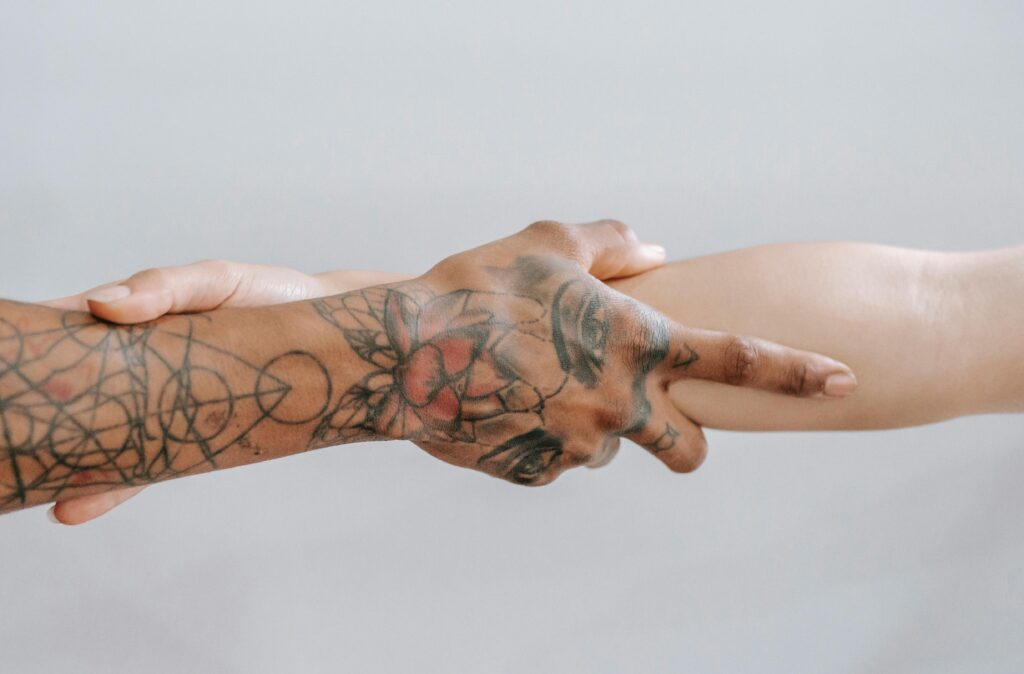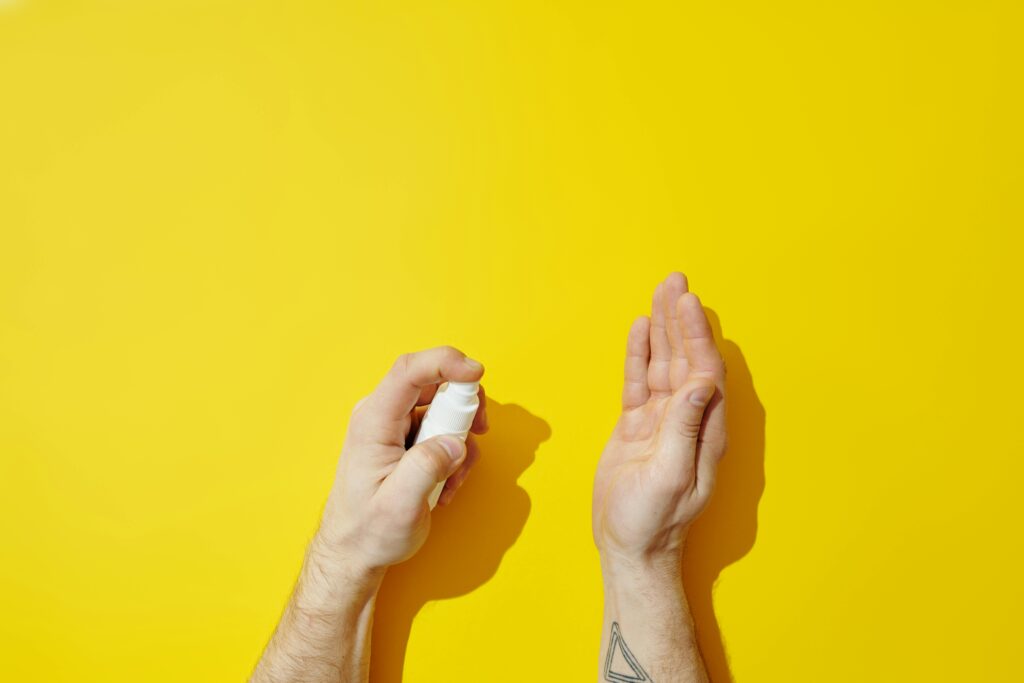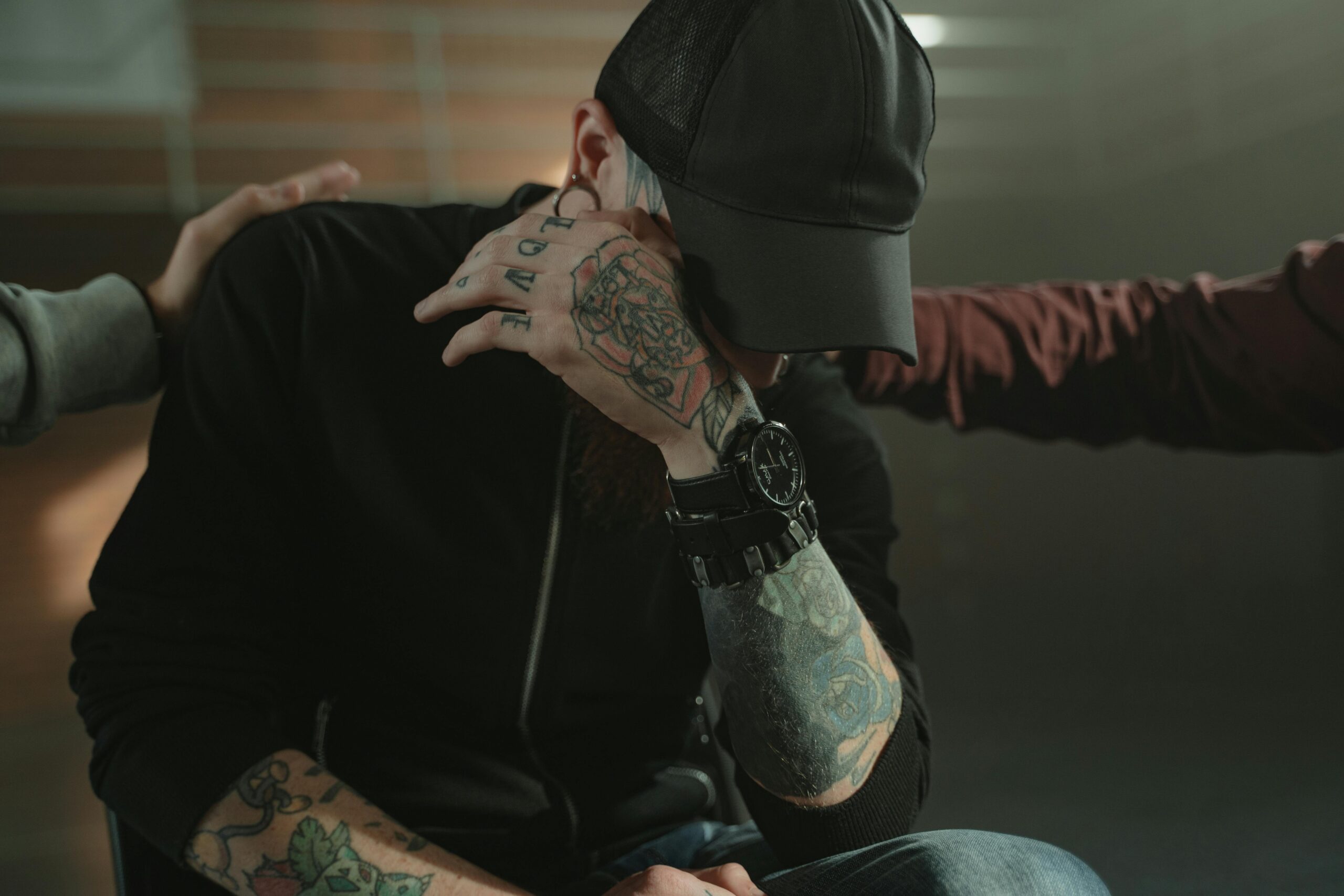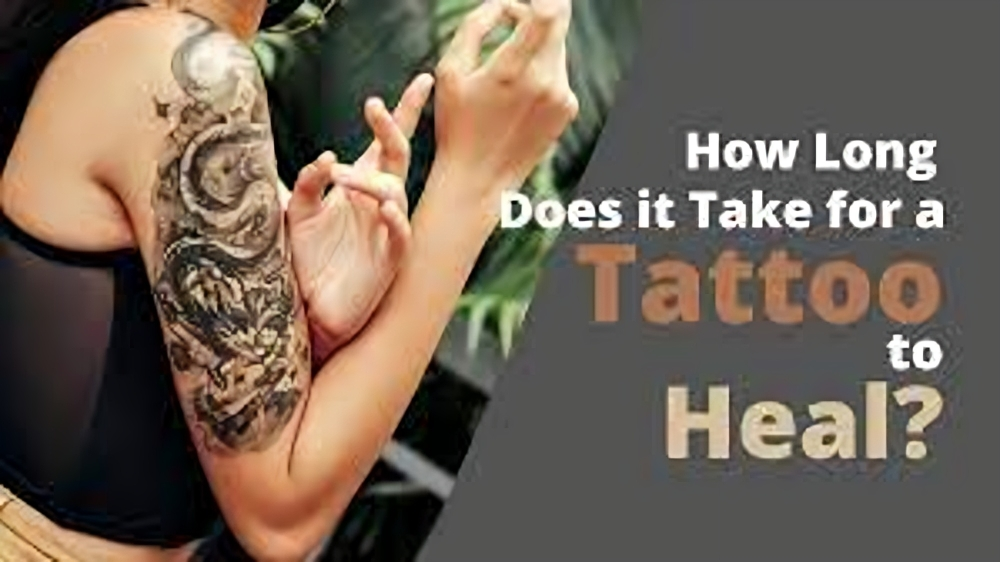To tattoo is a fantastic and mind-blowing experience. However, when you go out of the studio with the new tattoo, the next crucial stage is to take proper aftercare to enhance the healing process of the tattoo. But how does it take for tattoo to heal to the level that will not pose any threat to the health of the client? Healing time is always different for every person. here are certain factors that will determine the time cholesterol in the tattoo liver, size location of the tattoo, type of skin and aftercare.
Moving the discussion ahead we are now able to review the Stages of Tattoo Healing.
It is imperative to know that tattoo recovery is a step by step process, which can take different time intervals. Knowing these stages will assist you in knowing what should happen and how to better take care of the tattoo in each stage.
Initial Healing (Days 1–6)
The initial stage How Long Does It Take for a Tattoo to Heal is right from the time one is done with the tattooing process. Your skin will heal with discomfort and redness because the skin is damaged by the needle that pierces it many times. This period also has another name – “open wound” because, in fact, your tattooed skin is an open wound.
What to Expect: The skin of the area will be fragile, and may trap heat and feel hot. Sometimes, a clear plasma or slight oozing of ink is normally seen during the first few days only. This is normal.
Care Tips: Your tattoo artist will probably dress your tattoo which envelops the area in the form of a bandage. Cut off the access of the bandage as instructed (it is usually several hours to 24 hours after application) then rinse the area gently with water and soap that is gentle and does not contain any fragrance. It’s necessary not to soak the tattoo, or use products that are too harsh.
Itching and Peeling (Days 7 – 14)

When the skin starts to heal the epidermis will peel and scab in the same way as the sunburn. This is quite normal when it comes to tattoo healing since the skin is replacing the dead skin cells with new ones.
What to Expect: During the healing process of you tattoo, you may experience intense itching, but avoid scratching or peeling it. It can cause fur damage by rubbing against skin; it also destroys the design, fur and exposes the skin making it prone to infection.
Care Tips: Tattoo aftercare require regular application of tattoo aftercare lotion or even fragrance-free lotion on the are of the tattoo. The peeling should start coming off in about one week, however, do not scratch the flakes off the skin.
In the third and fourth weeks on the beard skin surface, scabbing with maturation occurs.
In the third stage of healing the skin will start to develop scabs over the tattoo. This may appear to be quite worrying, but, in actuality, what this means is that your skin is the process of healing. They should peeled off by natural shedding as the skin is replaced by a new one about How Long Does It Take for a Tattoo to Heal
What to Expect: The skin above the tattoo might seem to be a little darker or even slightly blurred during this stage, this is because it forms a protective layer over the tattoo. Once the new skin starts to form, the original vibrant color of your tat tool come out to the surface as well.
Care Tips: Keep on applying creams on the area and do not scratch the scabs that will be observed after some days. Let them detach by themselves so as not to mess up the skin and leave it ravaged or uneven.
Final Healing (Months 1–3)

The last phase of treatment is the phase of further healing involving the layers of skin as they continue to heal and rebuild themselves. Here, your tattoo’s feel entirely healed on the outer layer, but on the dermal layer, the skin is still healing. With fully healed skin, the tattooed skin will look clearer and brighter. However, it’s essential to take precautions to protect the tattoo from external factors like sun and harsh weather.
The next article focuses on the identification of several factors that may affect the healing time of tattoos.
As to the choice of tattoo, the question of the time it will take the tattoo to heal varies depending on several factors. While the average healing time ranges from 2 to 3 weeks for surface healing and up to 3 months for deeper healing, several factors can influence this timeline:While the average healing time ranges from 2 to 3 weeks for surface healing and up to 3 months for deeper healing, several factors can influence this timeline:
Degree of size detail and complexity of the inking
Generally speaking, it is possible to state that the process of healing requires more time in case of the larger tattoo and the one consisting of complex elements while simpler and smaller tattoos will require less time. A piece of art on the upper arm, also known as a full sleeve or a large piece on the back may take several months to heal completely, while a design on the wrist will take only a few weeks at the maximum.
Placement of the Tattoo
Thin skinned areas like the rib cage, hands, feet, or inner forearm take a long time for tattoos to heal. Tattoos on locations which are moderately tight such as thighs or upper arms appear to heal faster.
Skin Type and Health

This skin’s natural healing capacity determines the rate at which a tattoo heals. Generically, the patient’s skin type influences the rate of skin healing, with the dry skinned patients taking longer time and the well hydrated skins taking less time. Also, there is need to consider other factors like health status where those with health complications like diabetes or with immune system problems may take longer to heal.
Tattoo Aftercare
How Long Does It Take for a Tattoo to Heal? t goes without saying that good aftercare plays an important role in the course of the healing process. Neglecting the artist’s aftercare instructions on how to take care of the newly done tattoo may result to making the tattoo take long time to heal and it will also be prone to infections. Applying lotion on the tattoo, not exposing the tattooed area to direct sunlight and not scratching the scabs forming on the tattoo area are among the things to do to ensure the tattoo heals well.
It is also important that you understand the way to make tattoo healing faster.
While you can’t rush the body’s natural healing process, there are steps you can take to ensure your tattoo heals as quickly and smoothly as possible:While you can’t rush the body’s natural healing process, there are steps you can take to ensure your tattoo heals as quickly and smoothly as possible:

Follow Your Artist’s Instructions:
One thing your tattoo artist would advise is on the best process to follow when caring for your specific tattoo.
Keep It Clean:
Don’t apply creams or ointments on the tattoo and shave the area around the tattoo, bathe the tattoo daily with mild soap and warm water.
Moisturize Regularly:
Moisturizers should not contain any scent and it is recommended that a tattoo after care product is used to avoid the skin to become dry, cracked as well as begin to peel.
Avoid Direct Sunlight:
It is also important that you avoid exposing your tattoo to the sunlight when it is healing. If you have to be under direct sun exposure – be it from going to the beach or from simply being at work – cover the area thanks to a concealing clothing or use sunscreen once the tattoo has healed to a certain level.
Stay Hydrated:
It is also important that one drinks ample of fluids and keep the body hydrated as this will aid in the healing of the skin.
This type of healing problem requires the recognition of signs by expanding. Sometimes, this process is slower because of the infection or an allergic reaction that occurred when a person decided to get the tattoo. Watch out for the following signs that your tattoo may not be healing properly.
Watch out for the following signs that your tattoo may not be healing properly:
Increase in thickness, colour or tenderness of the skin above this over the first days of healing
Tattoo site becoming yellow or green and pus coming out of the tattoo
Red, scaly, rough, pale, abnormal and prominent that lasts for weeks for weeks
If you see any of these signs, consult your tattoo artist or a healthcare professional.














